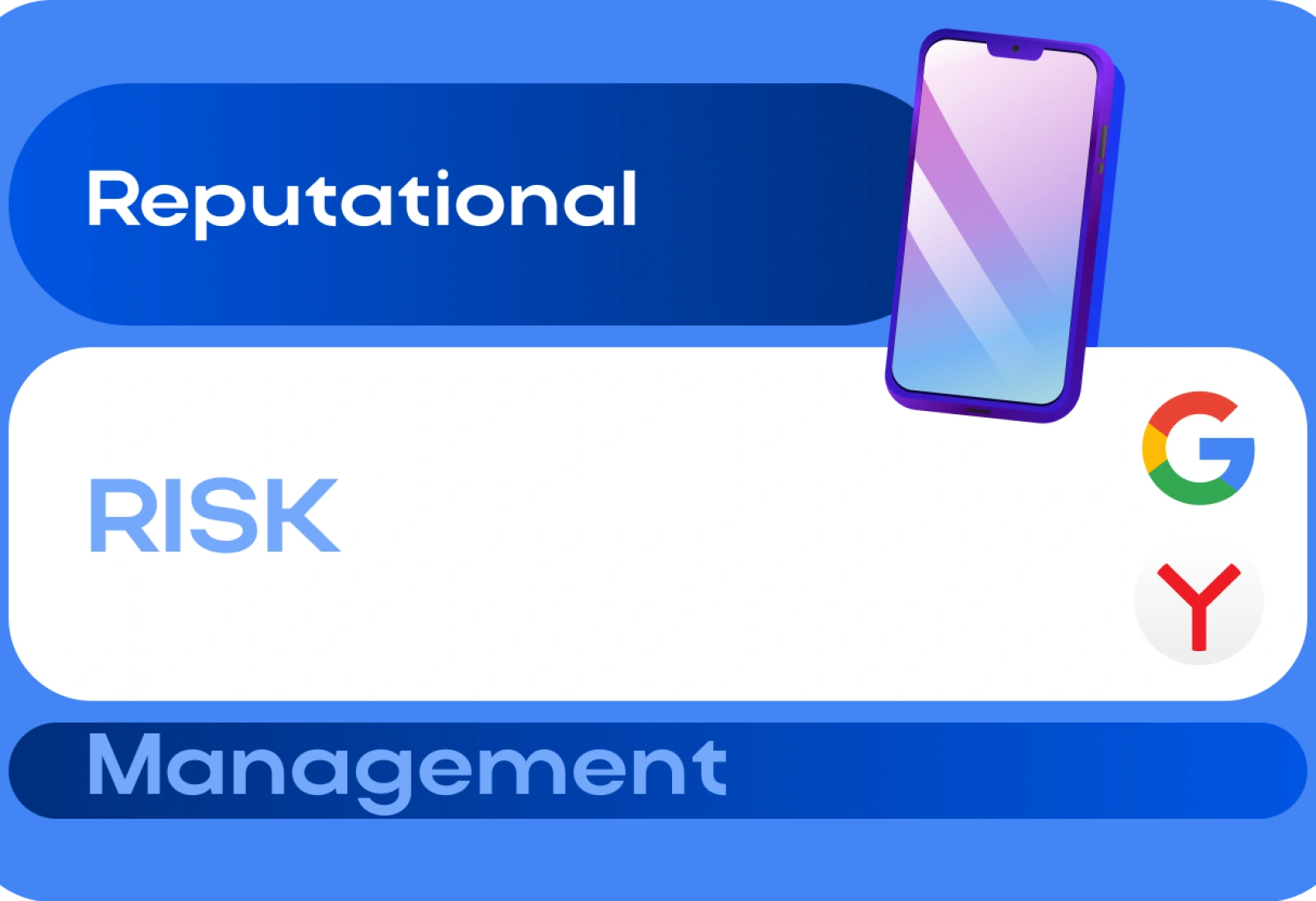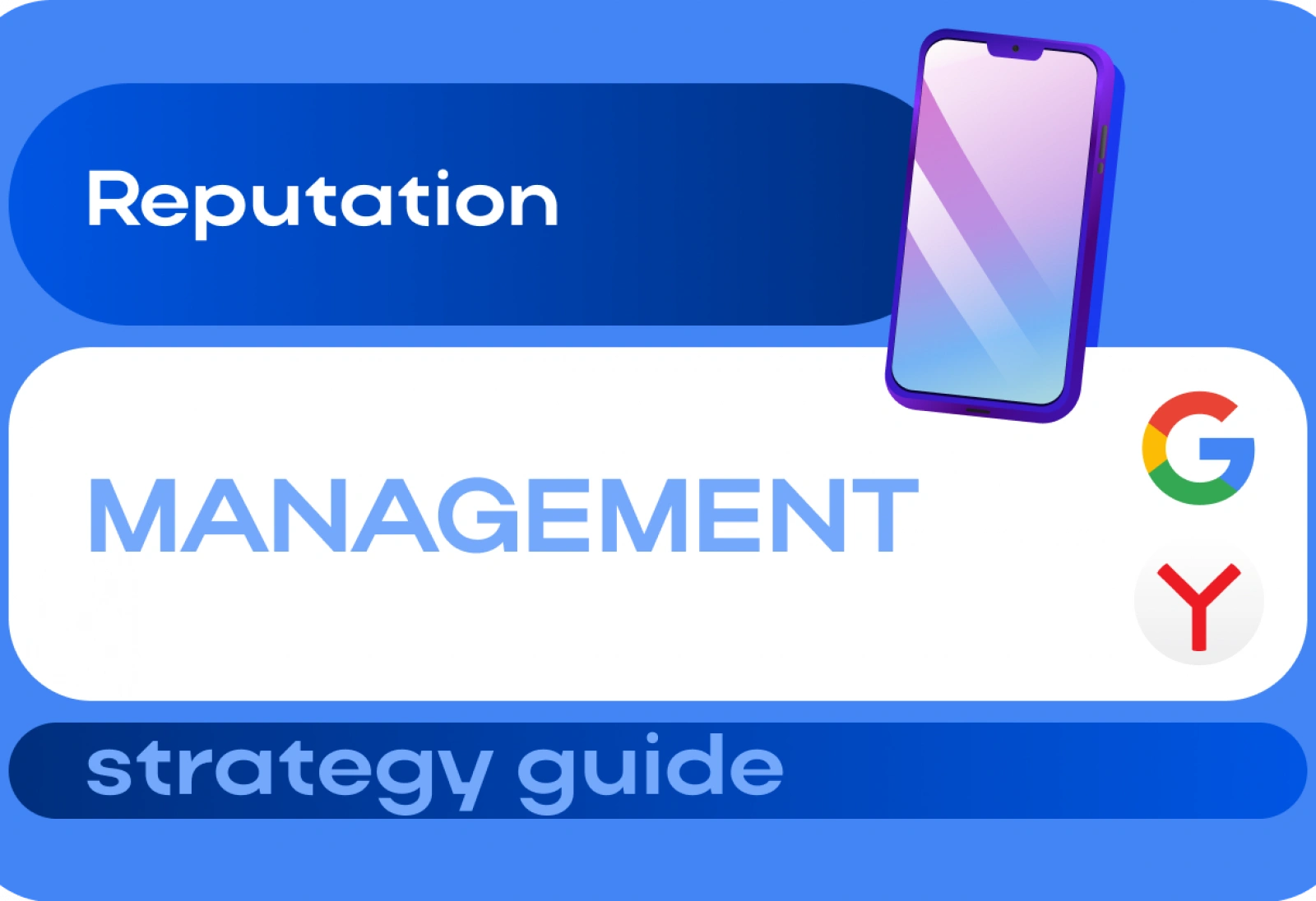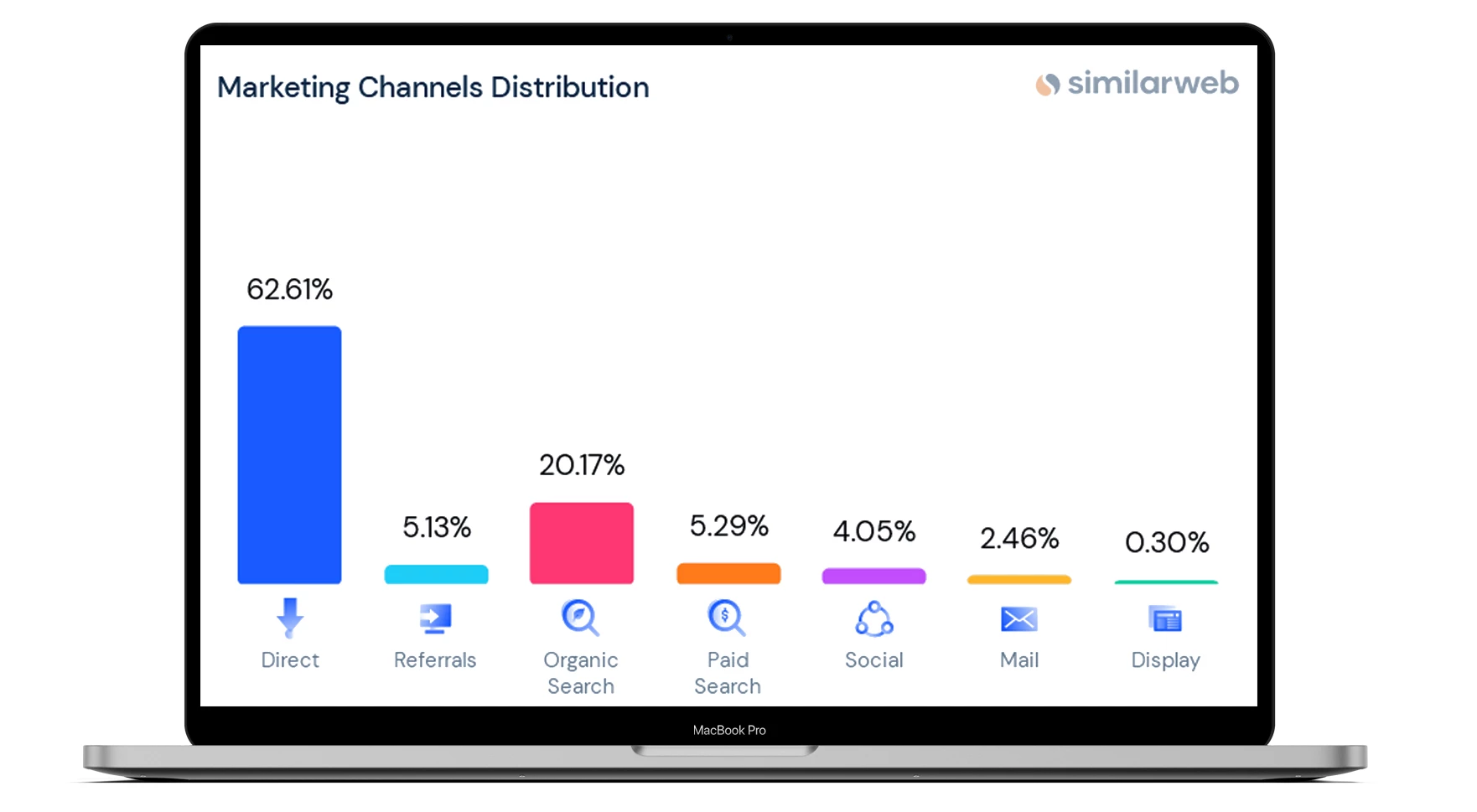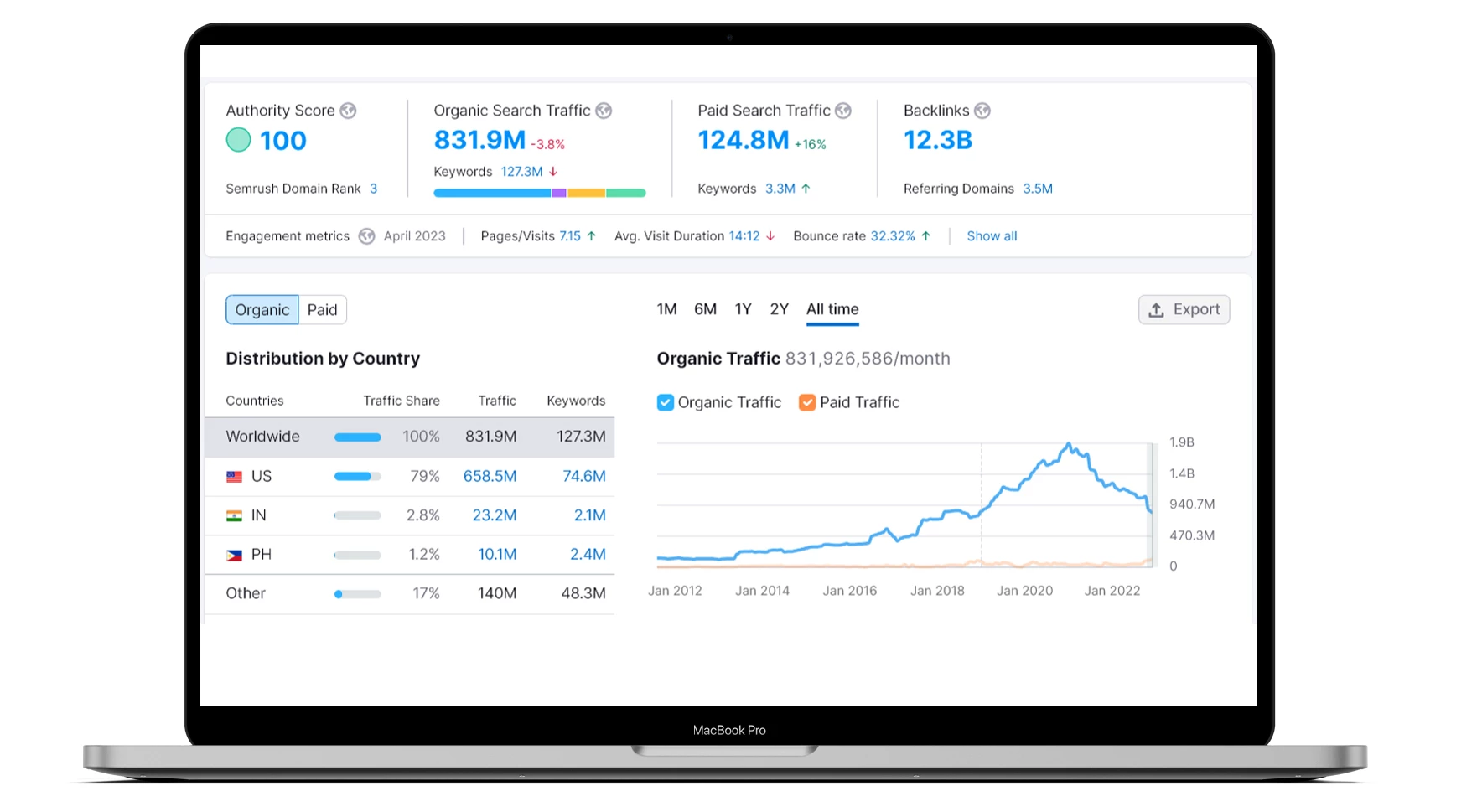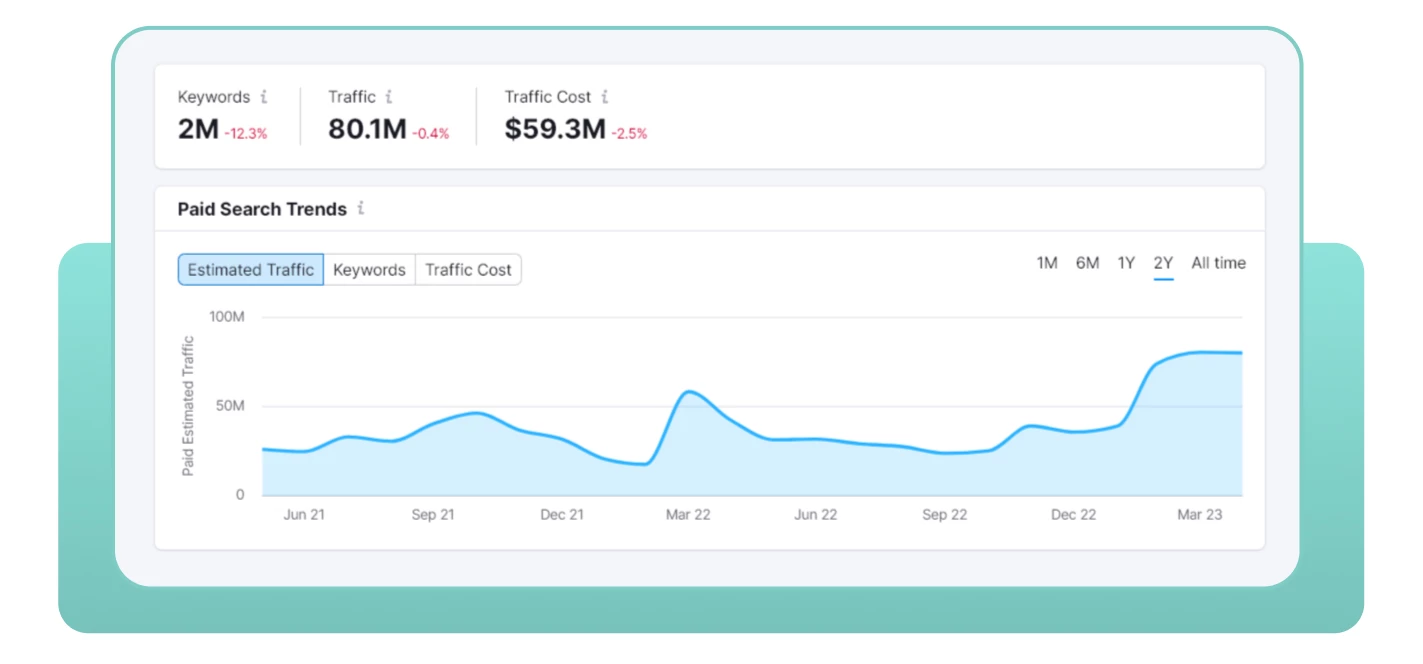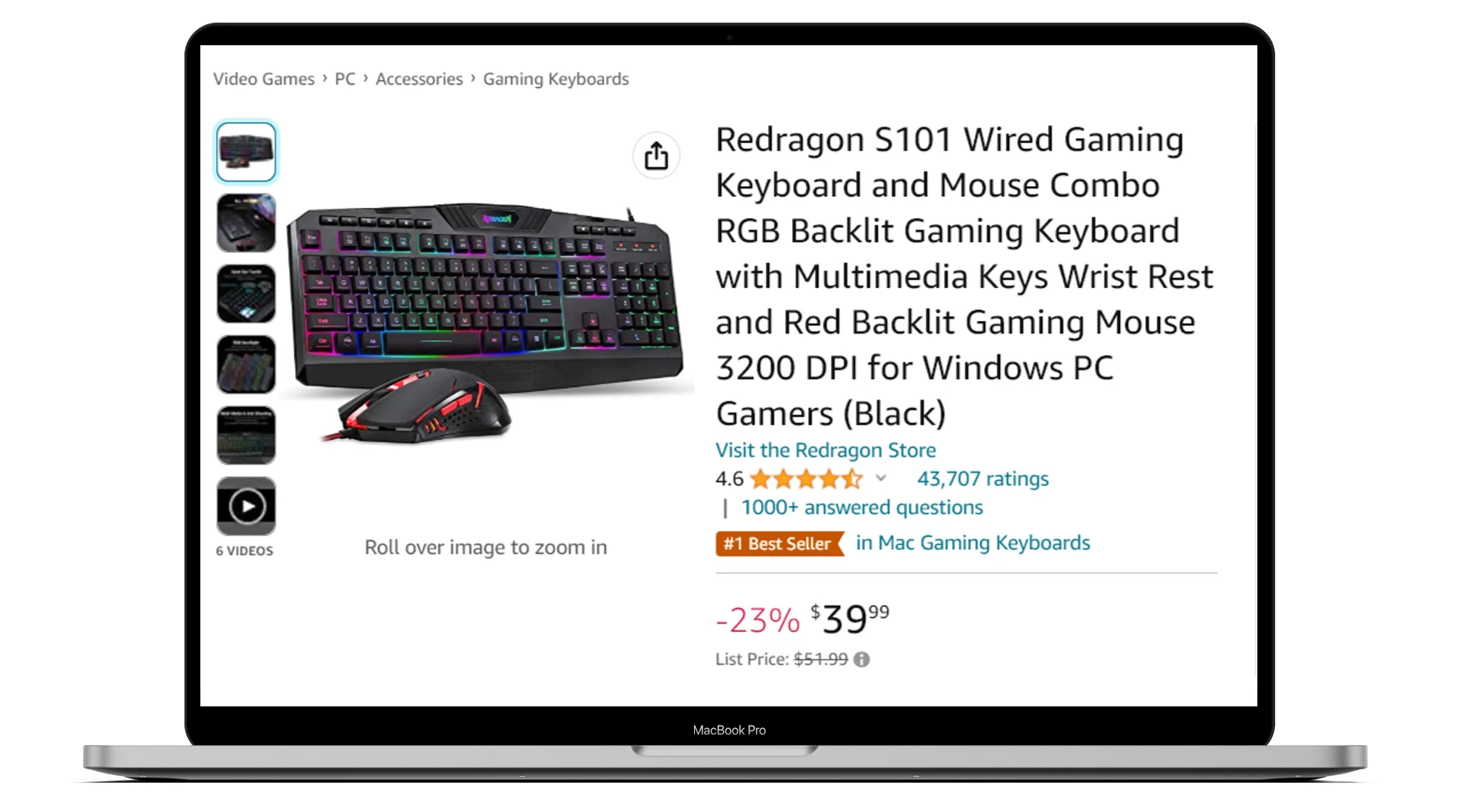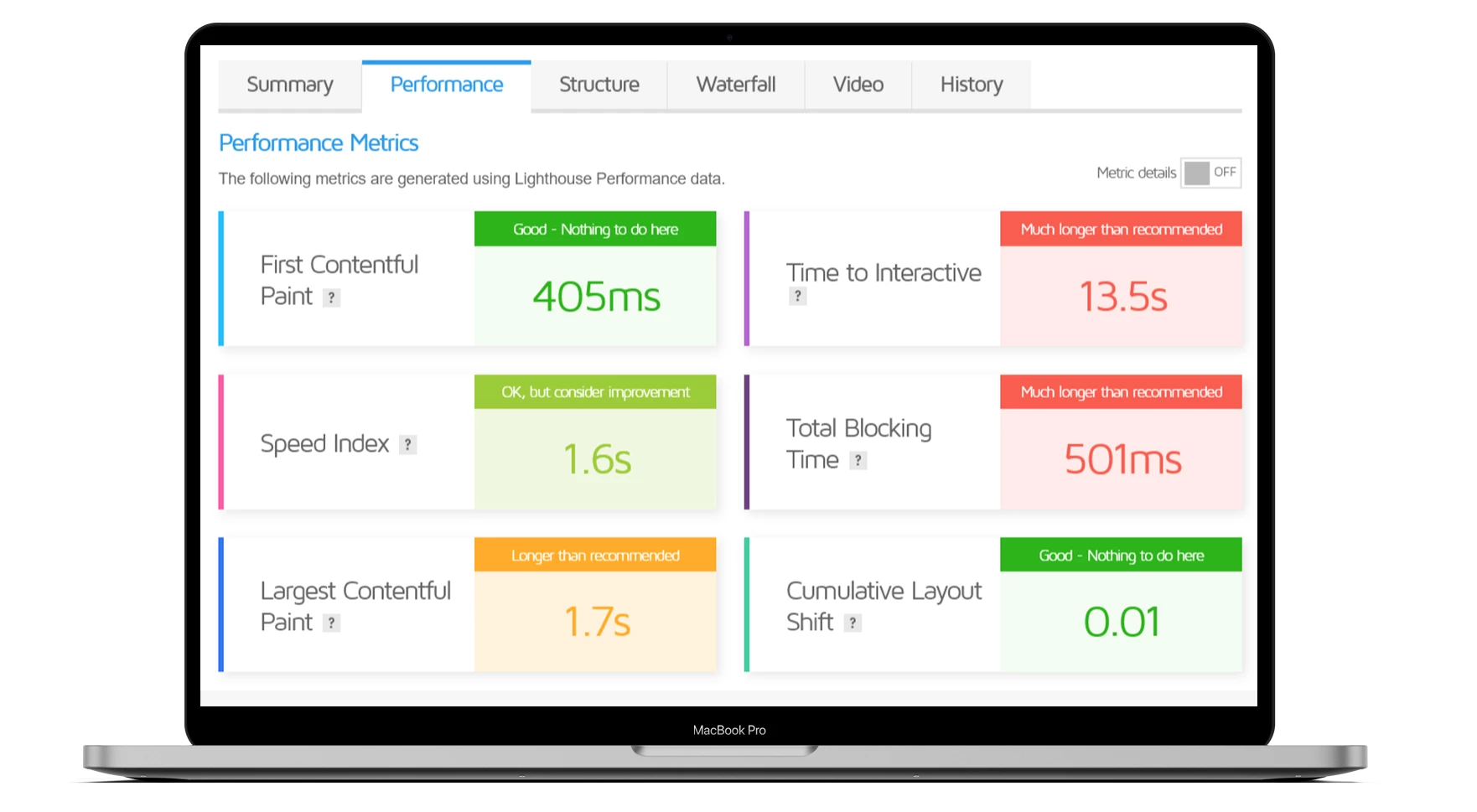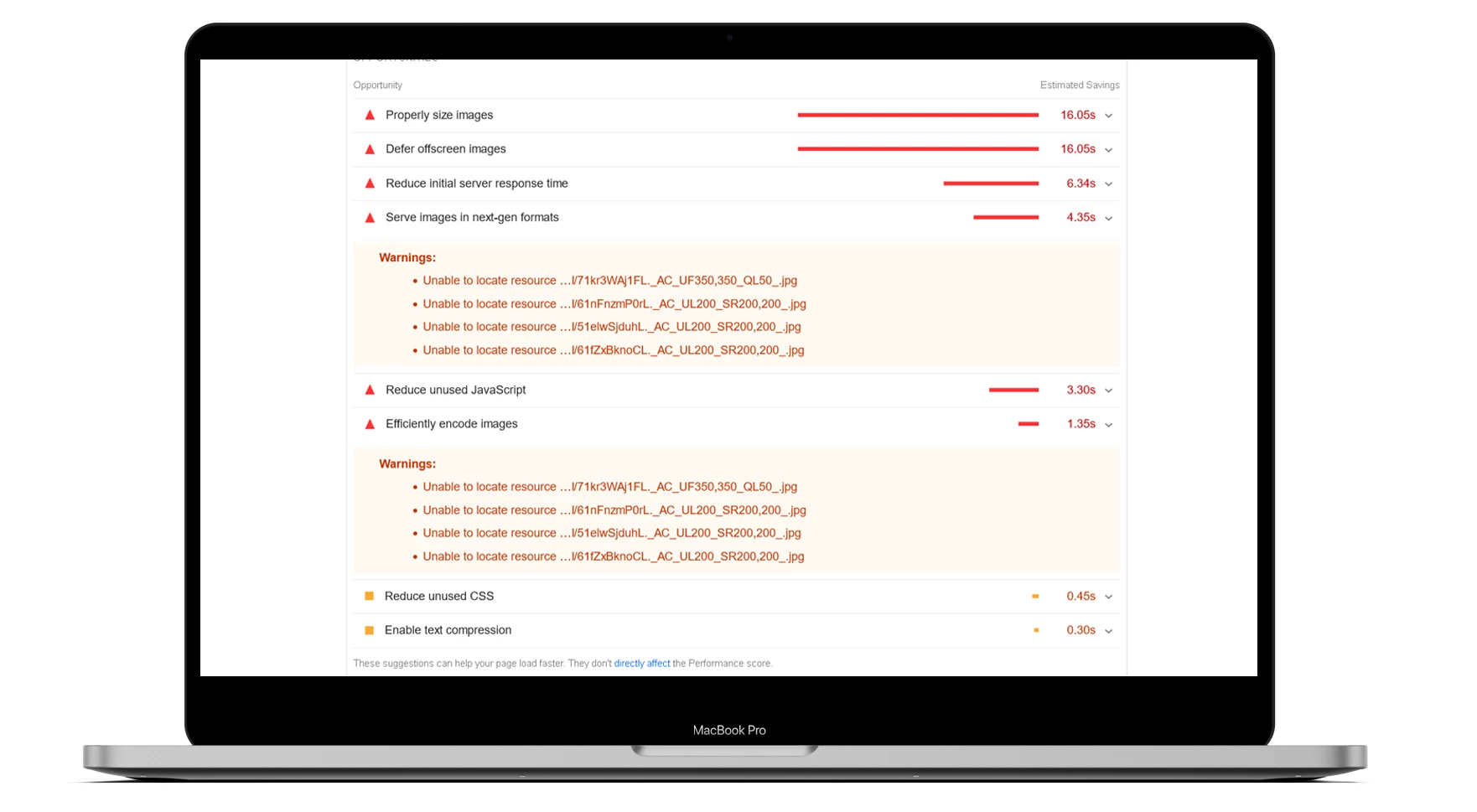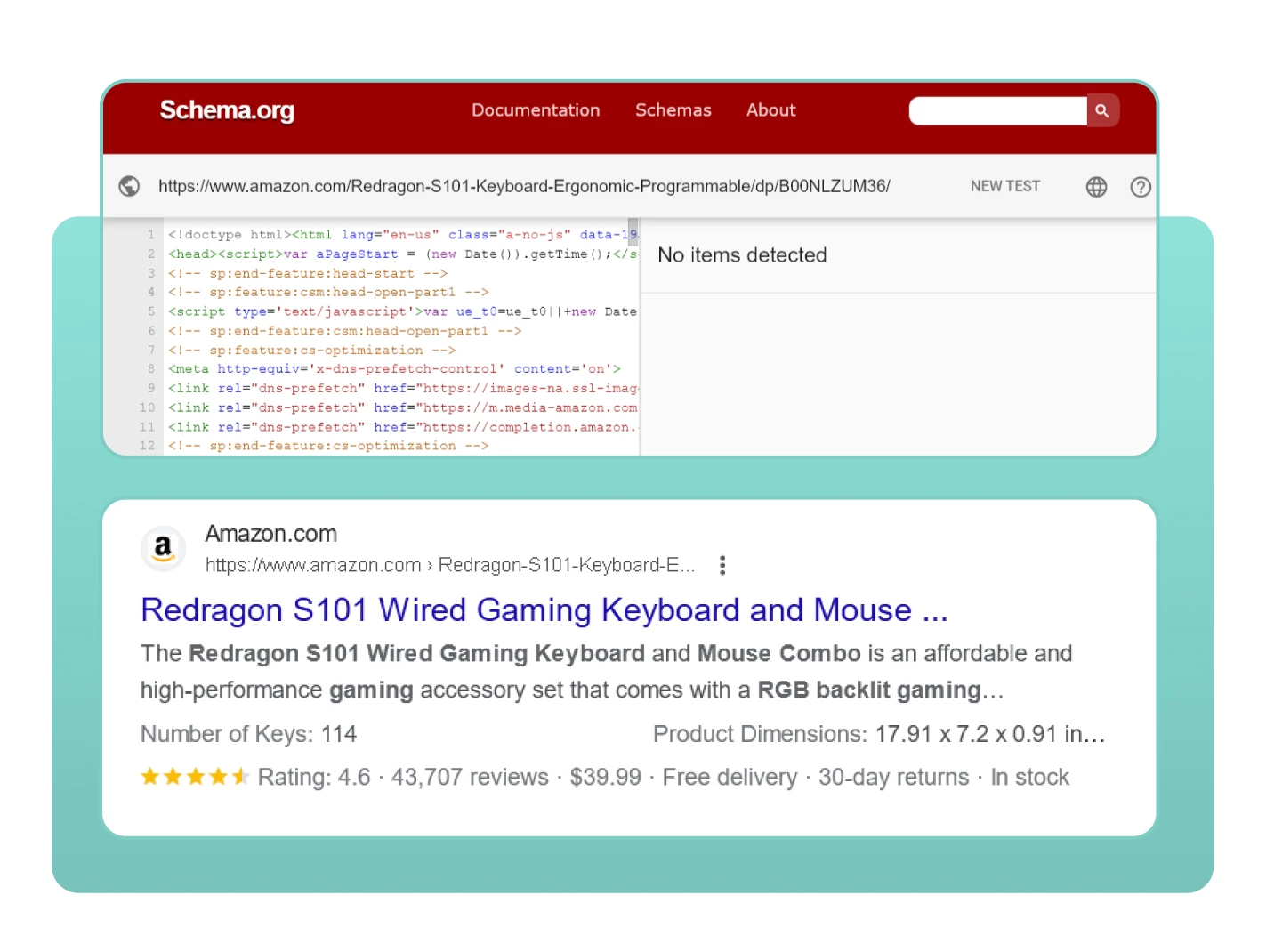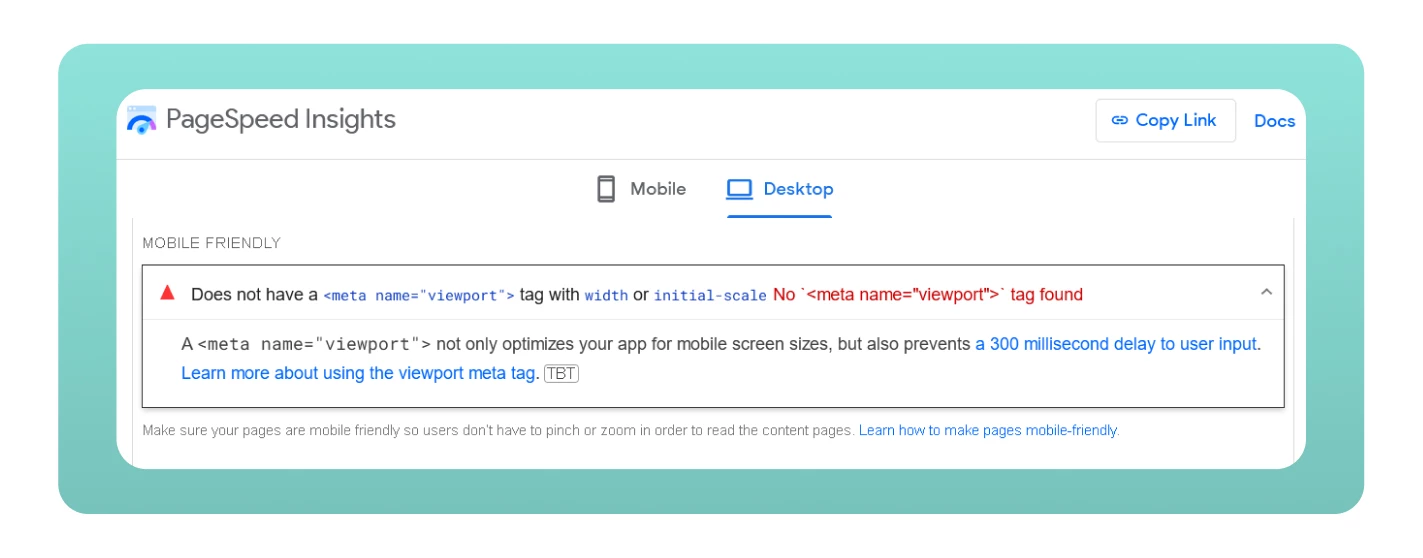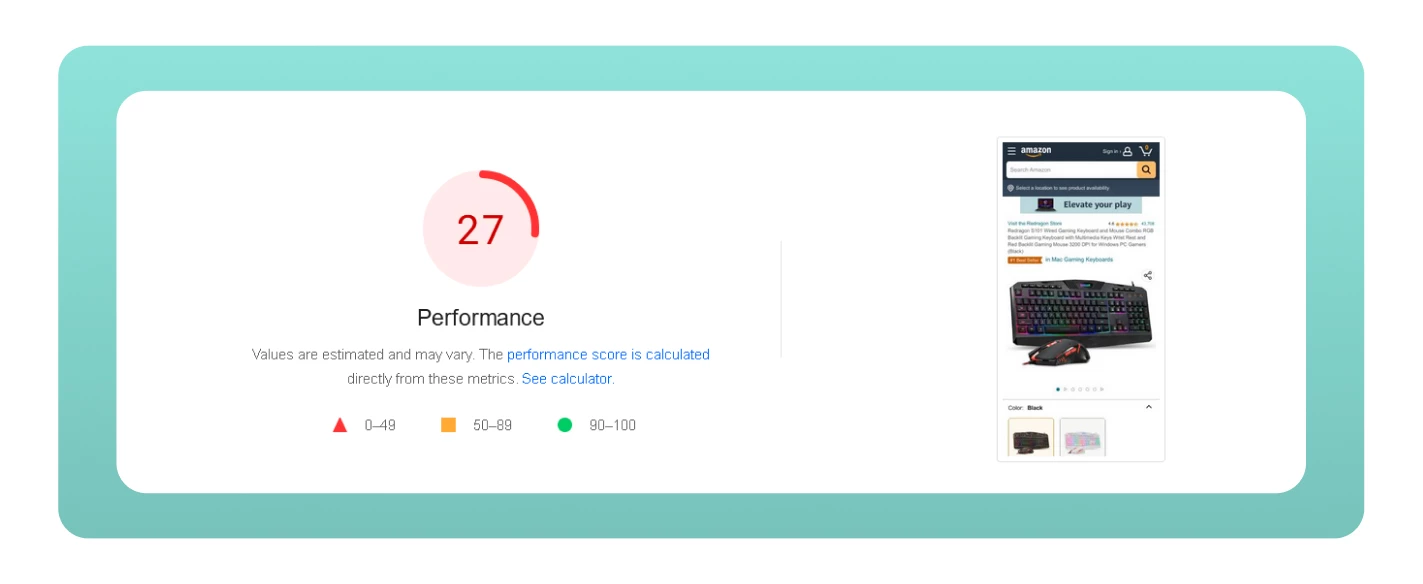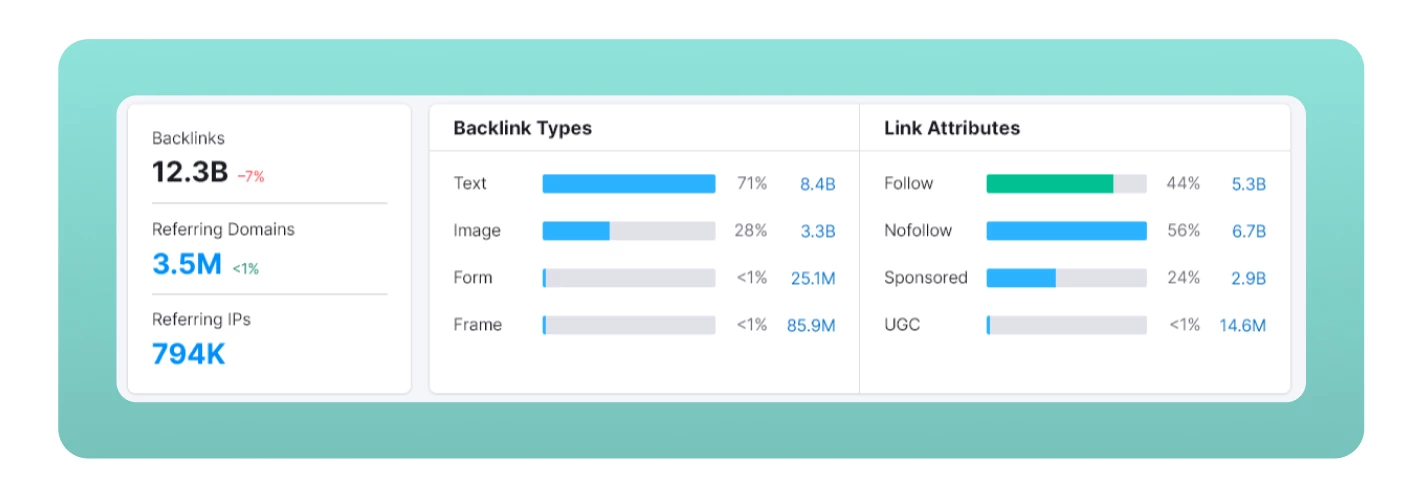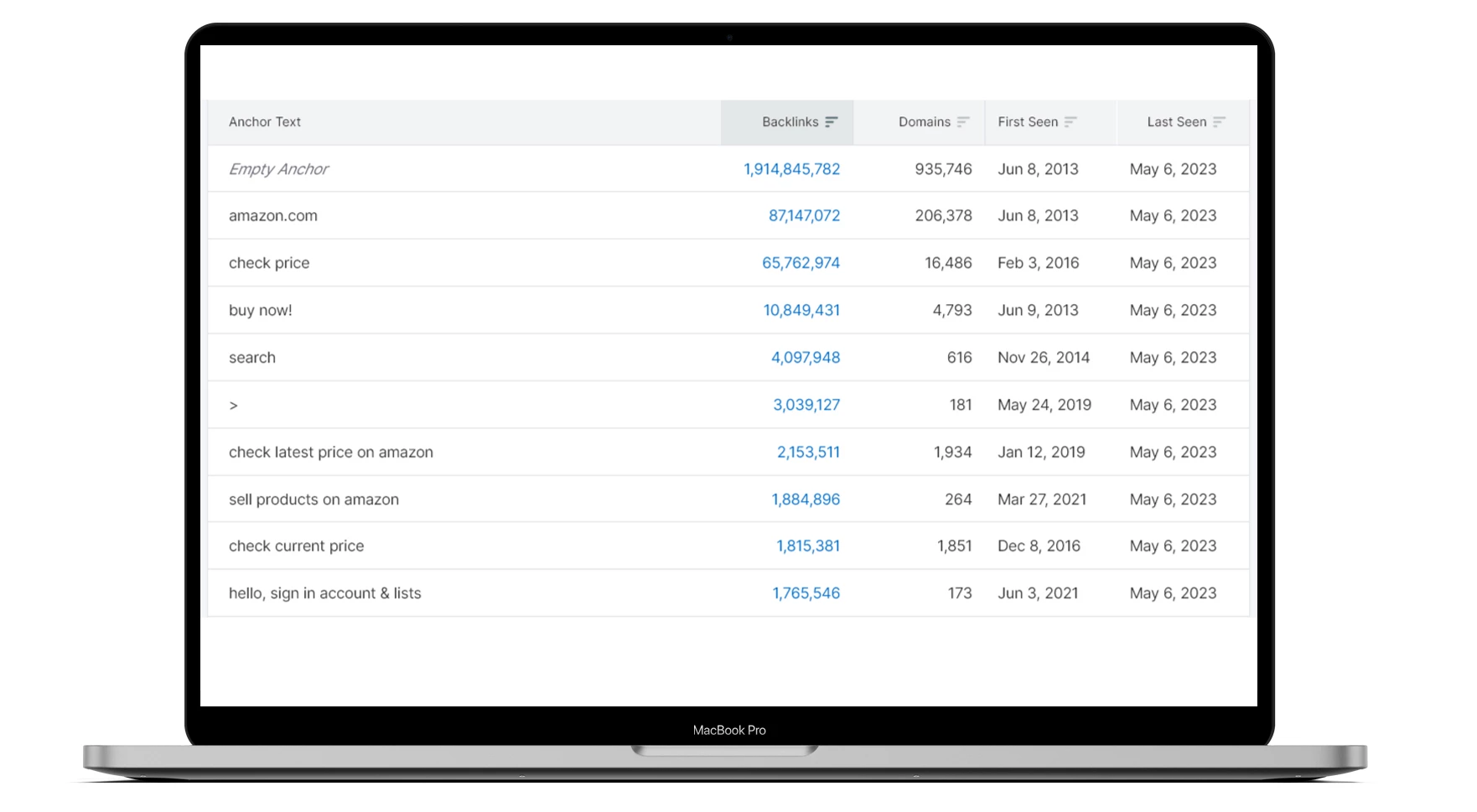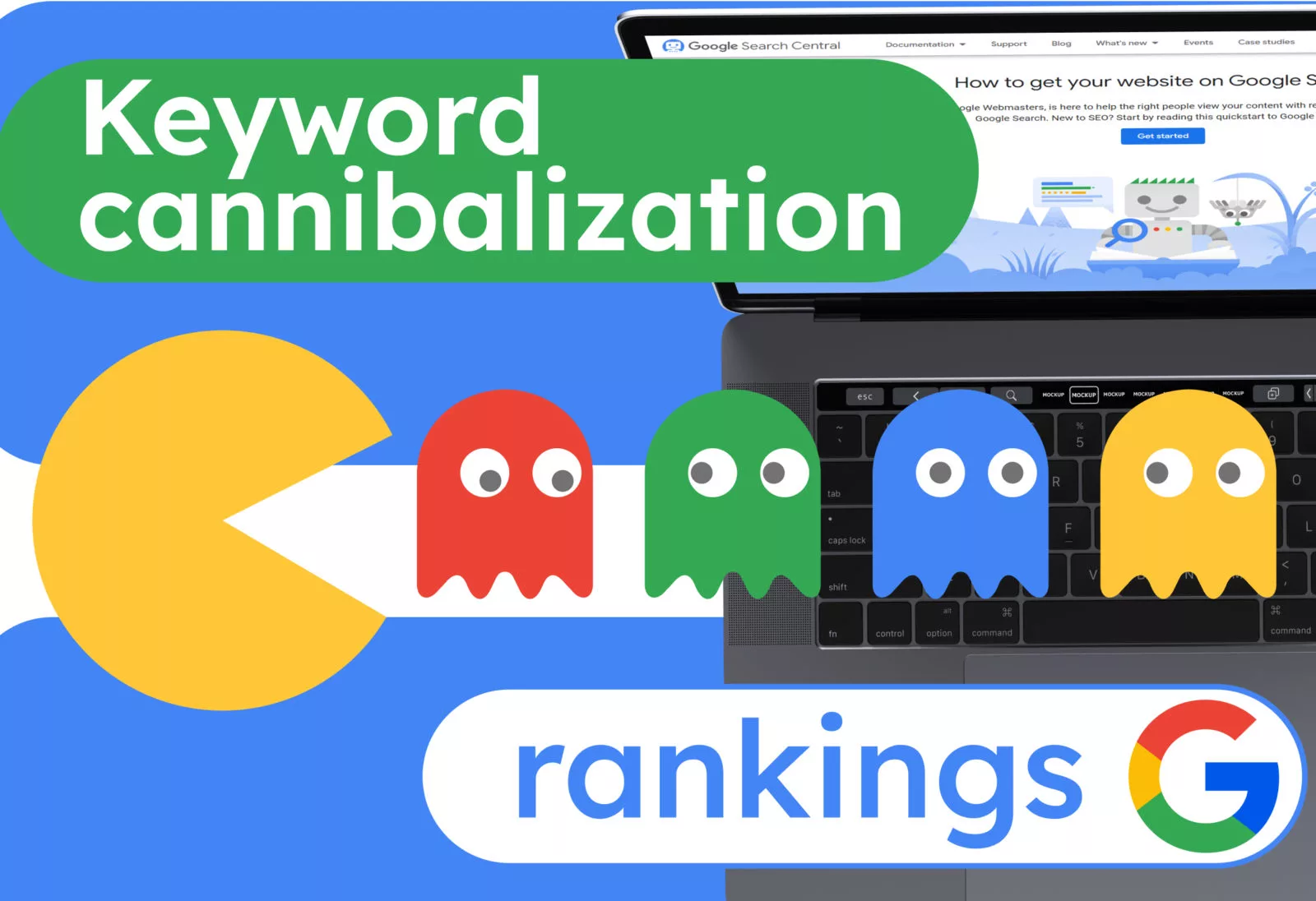Million-dollar mistakes: SEO promotion of Amazon marketplace.
Dear friends, I am pleased to welcome you!
Today, our team would like to tell you about the SEO methods used by the giant marketplace Amazon and how it can benefit you.
So, what we’ve got
- There are five h1 tags on the page.
- The internal search for products is used three times more by users than search engines.
- There are at least 36 domains redirecting users to Amazon.com.
- The page loading speed is slow.
- The title tag is located at the bottom of the body container
**********
According to Similarweb statistics, 20.17% of traffic to amazon.com comes from organic search. With a total of 2.3 billion visits, there are about 464 million clicks from search engines per month. More than 80% of buyers are in the United States. There are also regional versions of the site, such as amazon.sg for residents of Singapore and Malaysia with about 6 million visits per month.
**********
Semrush statistics show more modest results: 831.9 million organic traffic (79% of visits from the United States). The peak of organic traffic correlates well with the coronavirus pandemic.
**********
Amazon’s advertising traffic is an order of magnitude lower than organic traffic, ranging from 20 to 80 million visits per month. Judging by the trend towards its increase, it compensates for SEO flaws. The approximate cost of advertising is from 12 to 60 million dollars per month according to Semrush statistics.
**********
We will only investigate the main Amazon.com website, its internal and external factors of search engine ranking. We will leave the topic of product ranking within the Amazon site using the “A9” search algorithm aside for now. However, it is worth noting that when placing a product on the marketplace, the seller targets not only buyers from search engines but also from internal search (which is three times more).
If you enter the command site:www.amazon.com in Google, analyzing the order of pages in the search results, we can conclude that categories are more significant than product cards from Google’s perspective. This may indirectly indicate both the purchase of links (natural links are more often placed on products, purchased links are on categories) and the significant role of the navigation chain (breadcrumbs) in distributing weight between pages.
**********
Internal ranking factors
Since Amazon is a popular marketplace and we are interested in its SEO, we will investigate a randomly selected internal page with a product, assuming that all product cards are built on the same principle. It is pointless to investigate the main page of the site for internal factors since it mainly receives vital queries that are not particularly relevant to us.
As a result of the research, it was determined that product cards on Amazon mostly have the same structure (with the exception of the book section, where additional blocks are displayed using the Goodreads service). The page for a keyboard and mouse set was chosen as the investigated page:
1. Domain factors
The registration date of the amazon.com domain is November 1, 1994. The domain has been in existence for 28 years. At the time when PR was hidden, the value of this metric for the main page of the site was 9, which is an excellent indicator.
On IP 52.94.236.248, in addition to amazon.com, the xianshusong.com domain is located (registration date: April 15, 2020).
The main mirror of www.amazon.com has a 301 redirect from the page without www. Additionally, Megaindex service recognizes 36 websites that redirect users to Amazon and here they are.
2. Page loading speed
Page loading speed is determined using the Gtmetrix.com service. The server hosting the Amazon site is located in Ashburn, Virginia, USA. The test server we used to check the speed is located in Vancouver, Canada.
It’s worth noting that interactive elements take a long time to load (13.5 seconds) compared to the recommended 2.5 seconds. The time blocked by scripts (501ms) also exceeds the recommended 150 milliseconds.
Using the pagespeed.web.dev tool, we get even more disappointing results. In particular, the loading speed of both the mobile and desktop versions of the site is critically low. Upon re-analyzing the same page, staying in the red range, the seconds can differ, indicating a high server load. However, the problems remain the same: image size, image formats, and bloated JavaScript. If you want the fastest loading speed for your website pages, welcome to outsourcing with us!
How is Amazon trying to speed up page loading? In the <head> block, you can see the following entry:
Dns-prefetch (DNS prefetching) parameter is used to speed up the translation of domain names into IP addresses. It is used to speed up requests to other domains when loading additional content from them. On slow internet connections, dns-prefetch can speed up each cross-domain request by up to 0.2 seconds.
As can be seen, content is distributed across multiple servers to speed up response times. For example, product photos are located on the m.media-amazon.com domain, while images from the “frequently bought together” section are on the images-na.ssl-images-amazon.com domain. Of course, these are not just additional domains, but separate servers with their own IPs that are part of the Amazon CloudFront content delivery system.
3. Header hierarchy
The analyzed page has five <h1> tags, which some traditional optimizers may consider an error. However, Matt Cutts stated in 2009 that it’s okay to use multiple h1 tags on a page if it’s necessary for logical content structure, such as for headers. And here is the video: More than one H1 on a page: good or bad?:
Furthermore, the page violates the hierarchy of headers h1 > h2 > h3 > h4, which is also not a fatal error within the HTML5 paradigm. Additionally, an empty h3 tag was found.
4. Micro-markup
To check the micro-markup on the product card page, we will use the services https://search.google.com/test/rich-results and https://validator.schema.org. No micro-markup was found on the page, but Google uses data from the Merchant Center to create an extended snippet.
5. Text factors
On the page being reviewed, the product description text is not intended for people. Keyword stuffing was noted for the keyword “gaming” (17 occurrences, 7% of the text), which is close to keyword stuffing for the keyword “keyboard” (8 occurrences, 3.29% of the text). The phrase “gaming keyboard” appears 7 times in a small amount of text.
The reason for such spam is obvious: traffic from internal search is three times higher than traffic from search engines, so the seller is more interested in optimizing for internal search and for this purpose, he fills the product card with keywords as much as possible.
6. Adaptation for mobile devices
Amazon passes the standard mobile optimization check on https://search.google.com/test/mobile-friend without any remarks. However, it should be noted that the viewport meta tag is loaded through JavaScript and only for mobile screen resolutions, which is noticeable when using the pagespeed.web.dev service. In “desktop” mode, the service displays a warning: “No meta tag <meta name=”viewport”> with width or initial-scale property”. This warning does not appear in “mobile device” mode.
The performance of the mobile version of the website scored 27 out of 100, which is a very poor result. It gives the impression that Amazon cares more about Google’s algorithms than its customers.
7. Analysis of robots.txt file
A large number of rules in the robots.txt file indicate a complex website architecture and is considered bad practice in SEO. Usually, many rules are added in cases where there is no technical solution to the indexing of service pages.
It should be noted that the website is blocked from being indexed by Alibaba’s EtaoSpider Bot
User-agent: EtaoSpider
Disallow: /
The sitemap is not specified in the robots.txt file. Presumably, this is done to make it difficult to parse the website.
8. Internal linking
Each product page has a navigation chain of 3–4 elements that passes weight from product cards to categories.
9. Meta tags
The <ttitle> tag and meta tags are located inside the <body> tag around 2750 line. This was likely done to speed up visual page loading, but from an SEO standpoint, it can cause problems. This leads to two conclusions:
- Googlebot understands the title and meta tags placed out of their usual location and correctly forms the snippet;
- In case the page indexing is interrupted prematurely (for example, due to a limit of 15MB or a timeout), an error may occur.
10. Cache
Despite the page appearing in search results and remaining unchanged on the site for a long time (the web.archive.org service shows it from August 9, 2019), the analyzed page is not present in Google’s cache. Although John Mueller has stated that if a certain page on a site is not present in Google’s cache, it does not necessarily mean that it will rank poorly, in practice, the absence of a page in the cache often becomes a signal that something is wrong.
11. Outbound links
External links on the site are set to Amazon’s service domains, to subsections (jobs, blog, science): https://www.amazon.jobs, https://blog.aboutamazon.com, and https://www.amazon.science, to domains with redirects to the main site, such as https://www.comixology.com, to their own separate projects, such as IMDb (Internet Movie Database, owned by Amazon since 1998), Goodreads (book catalog owned by Amazon), pillpack.com (Amazon’s pharmaceutical division), eero.com (WiFi installation), Blink Home (home security camera installation owned by Amazon since 2017), and similar ones. No outbound links to services not owned by Amazon were found. All external links are dofollow and located in the footer.
External Ranking Factors
According to Semrush statistics, Amazon has 12.3 billion backlinks from 3.5 million domains. 71% of these backlinks are text-based and 28% are image-based. It is interesting to note that only 44% of these links do not have an attribute, while 56% are marked with the nofollow attribute (meaning they do not trust the site) and 24% are marked with the sponsored attribute (meaning they were paid for advertising). Less than 1% of these backlinks are marked with the ugc attribute, which is used to mark user comments (for example, on forums). As of 2020, all these attributes can be used for crawling, indexing, and ranking websites. Adding different attributes does have a positive effect on the backlink profile.
A notable number of inbound links that carry significant weight are linked to the coronavirus pandemic. During self-isolation, there was a sharp increase in demand for consumer goods with home delivery, and Amazon was able to meet these needs. Many thematic articles with links to Amazon appeared, such as “10 online apps for quarantine.” It is impossible to say for certain whether Amazon paid authors of such articles (due to the platform’s popularity, these could be natural links), but using this situation is a good idea for building a backlink profile.
Amazon started with selling books and made a name for itself in the process. Therefore, a significant portion of their backlink profile is associated with book-related products. Moreover, it is not only about the accumulated backlink profile over the years, but also about the earned reputation. When representatives of the United States government agencies provide links to literature, they refer to Amazon, thus adding high-quality natural links to their backlink profile.
At the same time, a large amount of presumably commercial links is related to the relevance of the online marketplace. It is observed that the domain is simply inflated with external links to increase the trust level, while landing pages for products and categories rise in the search results due to the overall domain trust. This is a good way to build a backlink profile with an enormous budget.
2. Anchor Analysis
The most popular type of backlink to Amazon is non-anchor. The second most popular is the link with the anchor “amazon.com”, which can also be considered a non-anchor link (the “amazon” anchor is a vital search query, and the site is defaultly ranked first in the search results, and it does not have any other meaning except passing the weight). From third to fifth place are: “check prize”, “buy now!”, and “search”. A significant number of backlinks have anchors such as: “check latest price on amazon”, “sell products on amazon”, “check current price”, “hello, sign in account & lists”. Based on the large number of identical anchors from a significant number of different domains, it can be concluded that links were purchased.
An analysis of the anchors of Amazon’s backlinks confirms the theory of the need for more non-anchor links than anchor links. This looks more natural for algorithms.
Conclusion
At this stage of its development, the most significant problem for Amazon is not attracting new visitors, but maintaining system performance during periods of peak activity by existing visitors. System overload and long response times can lead to customers migrating to competitors. From a technical point of view, not everything is going well for the marketplace, and work should be focused in this direction.
SEO promotion of a large aggregator is always limited by a multitude of technical and organizational factors. There is a high probability that Amazon’s SEO department has a low priority in making decisions about technical changes. Therefore, creating a niche site on a specific theme is cheaper and more effective than trying to use one site to promote a large amount of diverse products.
